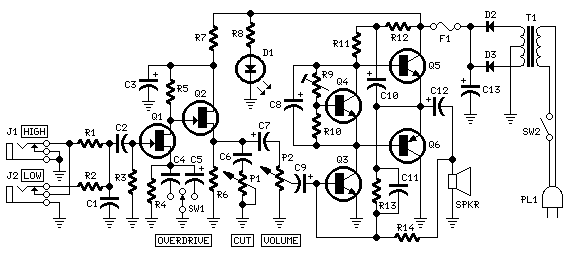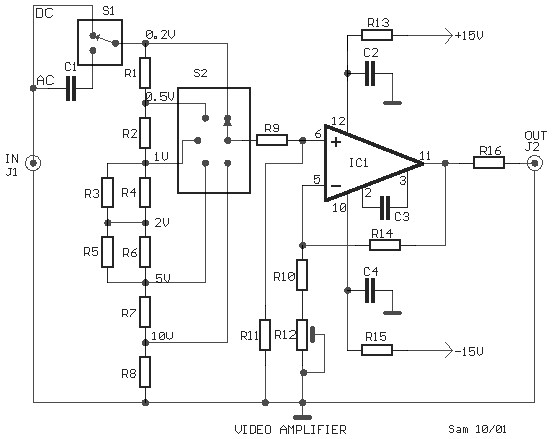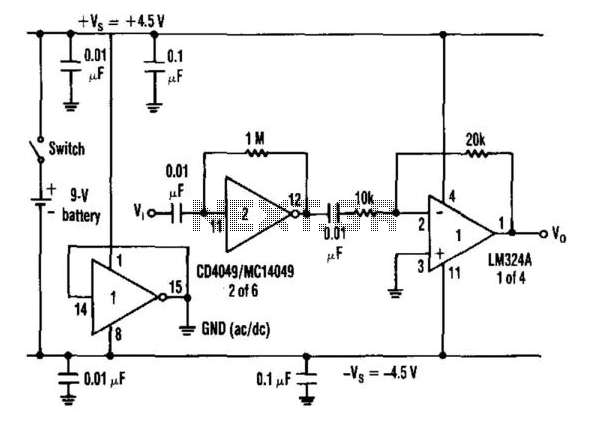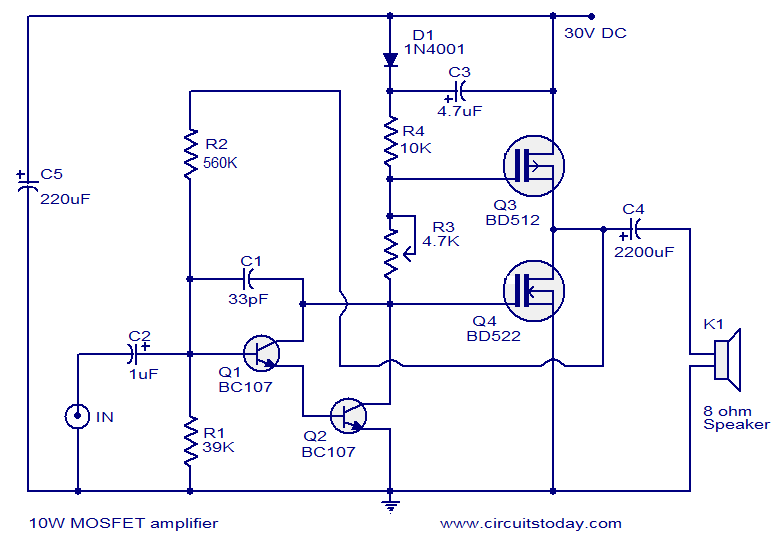
Wideband uhf amplifier with high-performance fets
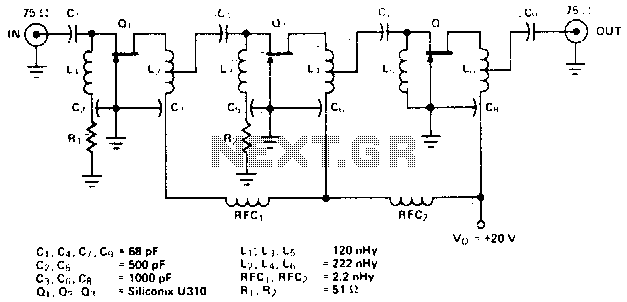
The amplifier circuit is designed for a center frequency of 225 MHz, with a bandwidth of 50 MHz at 1 dB, low input voltage standing wave ratio (VSWR) in a 75-ohm system, and a gain of 24 dB. Three stages of U310 FETs are utilized in a straightforward design.
The amplifier circuit operates at a center frequency of 225 MHz, which is optimal for various communication applications. The design incorporates a 1 dB bandwidth of 50 MHz, allowing for effective signal amplification while maintaining signal integrity across the specified frequency range. A low input VSWR is achieved in a 75-ohm system, which is critical for minimizing signal reflections and ensuring maximum power transfer from the source to the load.
The use of three stages of U310 FETs (Field Effect Transistors) is a key aspect of the design. These FETs are known for their high gain characteristics and low noise figure, making them suitable for RF amplification. The straightforward design approach ensures that the amplifier is both efficient and reliable, capable of delivering a consistent gain of 24 dB across the operating frequency range.
In terms of circuit topology, the amplifier can be implemented using a common source configuration for each FET stage, which provides the necessary voltage gain while maintaining a good input and output impedance match. Biasing networks are essential to ensure that the FETs operate in the desired region of their transfer characteristics, thus optimizing performance.
Additional components such as matching networks may be included at the input and output to further enhance the amplifier's performance, ensuring that the impedance is well-matched to the 75-ohm system. This matching is crucial for achieving low VSWR and maximizing the efficiency of the amplifier.
Overall, the design of this amplifier circuit is tailored to meet specific performance criteria, making it suitable for applications that require reliable signal amplification at RF frequencies.The amplifier circuit is designed for 225 MHz center frequency, 1 dB bandwidth of 50 MHz, low input VSWR in a 75-ohm system, and 24 dB gain Three stages of U310 FETs are used in a straight forward design.
The amplifier circuit operates at a center frequency of 225 MHz, which is optimal for various communication applications. The design incorporates a 1 dB bandwidth of 50 MHz, allowing for effective signal amplification while maintaining signal integrity across the specified frequency range. A low input VSWR is achieved in a 75-ohm system, which is critical for minimizing signal reflections and ensuring maximum power transfer from the source to the load.
The use of three stages of U310 FETs (Field Effect Transistors) is a key aspect of the design. These FETs are known for their high gain characteristics and low noise figure, making them suitable for RF amplification. The straightforward design approach ensures that the amplifier is both efficient and reliable, capable of delivering a consistent gain of 24 dB across the operating frequency range.
In terms of circuit topology, the amplifier can be implemented using a common source configuration for each FET stage, which provides the necessary voltage gain while maintaining a good input and output impedance match. Biasing networks are essential to ensure that the FETs operate in the desired region of their transfer characteristics, thus optimizing performance.
Additional components such as matching networks may be included at the input and output to further enhance the amplifier's performance, ensuring that the impedance is well-matched to the 75-ohm system. This matching is crucial for achieving low VSWR and maximizing the efficiency of the amplifier.
Overall, the design of this amplifier circuit is tailored to meet specific performance criteria, making it suitable for applications that require reliable signal amplification at RF frequencies.The amplifier circuit is designed for 225 MHz center frequency, 1 dB bandwidth of 50 MHz, low input VSWR in a 75-ohm system, and 24 dB gain Three stages of U310 FETs are used in a straight forward design.
